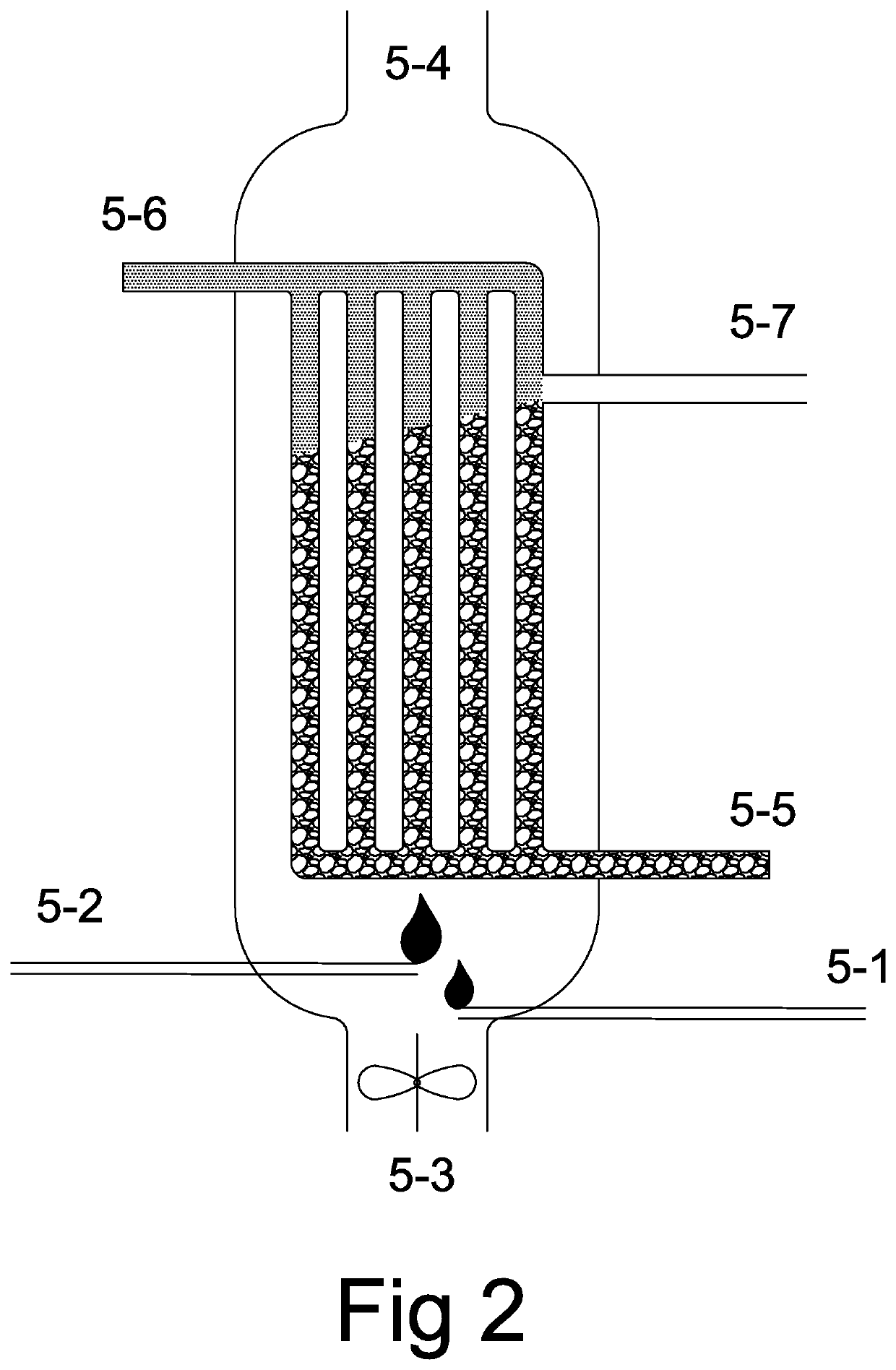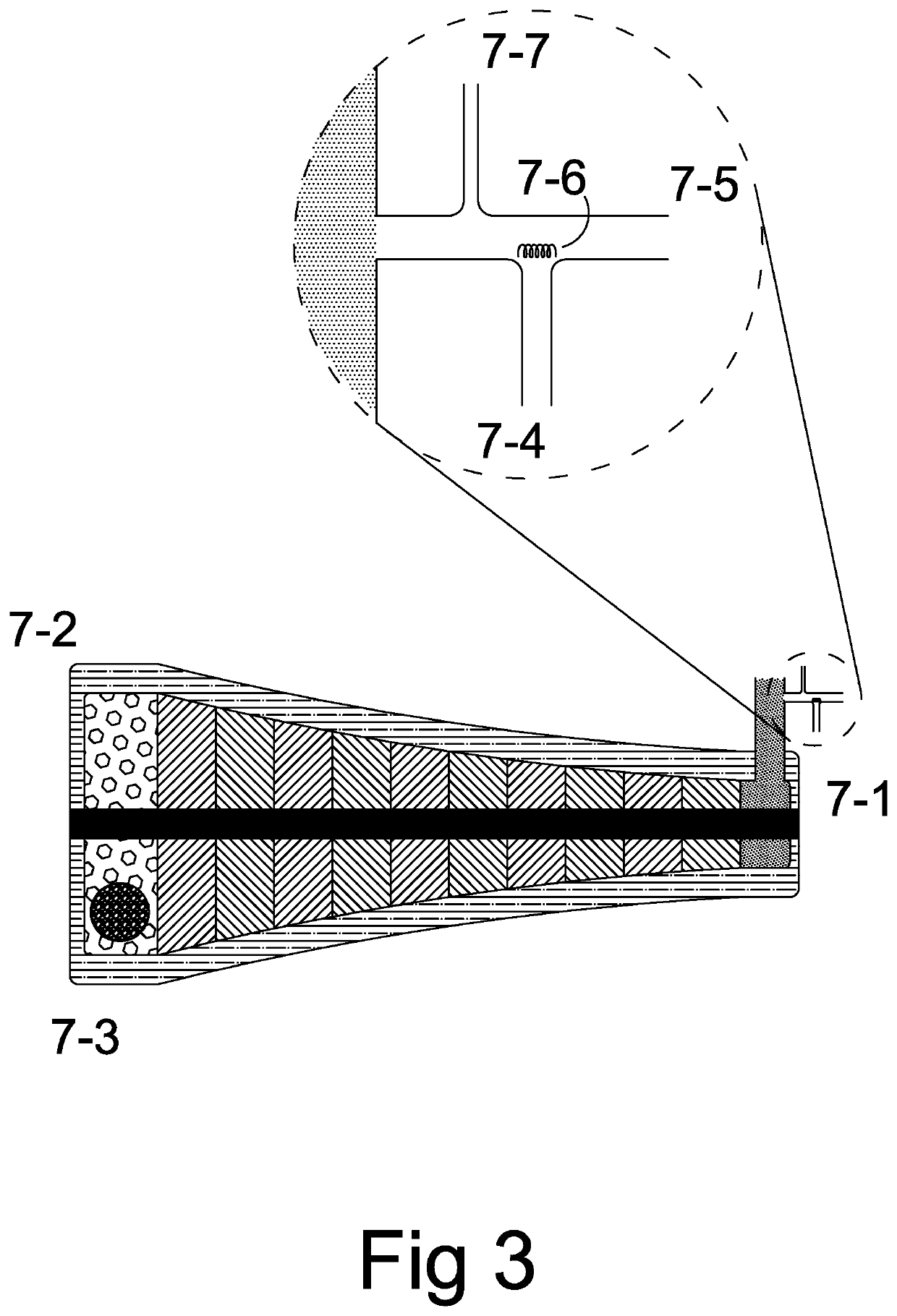Zero emission propulsion systems and generator sets using ammonia as fuel
a technology of ammonia fuel and propulsion system, which is applied in the direction of machines/engines, mechanical equipment, electric control, etc., can solve the problems of difficult ignition of ammonia (nhsub>3/sub>), and achieve the effect of good ignition of the air/ammonia (nh3) mixtur
- Summary
- Abstract
- Description
- Claims
- Application Information
AI Technical Summary
Benefits of technology
Problems solved by technology
Method used
Image
Examples
Embodiment Construction
[0045]1) Ammonia (NH3) fuelling.[0046]Ammonia (NH3) fuelling will normally take place at a pressure of approximately 10 bar, which is the vapour pressure of ammonia (NH3) at approx. 25° C. Here, different fuelling devices can be used depending on whether the ammonia (NH3) is stored as a liquid under pressure (at about 10 bar at 25° C.) or cooled (at about −33.4° C. at 1 atm). There will also be different fuelling devices depending on the type of vehicle or vessel. For vehicles, the same refuelling device as for LPG could be used.
[0047]2) Venting nitrogen (N2) (N2 from exhaust).[0048]This is the venting / exhaust of nitrogen (N2) from the hydrogen reactor (4). If ammonia (NH3) is cleaved to produce nitrogen (N2) and hydrogen (H2), excess nitrogen (N2) will be vented to air.
[0049]3) Fuel tank(s) for ammonia (NH3).[0050]Tank for storage of ammonia (NH3). The ammonia (NH3) is stored in liquid form either under pressure (at approx. 10 bar) or chilled (at approx. −33.4° C. at 1 atm). Altern...
PUM
 Login to View More
Login to View More Abstract
Description
Claims
Application Information
 Login to View More
Login to View More - R&D
- Intellectual Property
- Life Sciences
- Materials
- Tech Scout
- Unparalleled Data Quality
- Higher Quality Content
- 60% Fewer Hallucinations
Browse by: Latest US Patents, China's latest patents, Technical Efficacy Thesaurus, Application Domain, Technology Topic, Popular Technical Reports.
© 2025 PatSnap. All rights reserved.Legal|Privacy policy|Modern Slavery Act Transparency Statement|Sitemap|About US| Contact US: help@patsnap.com



